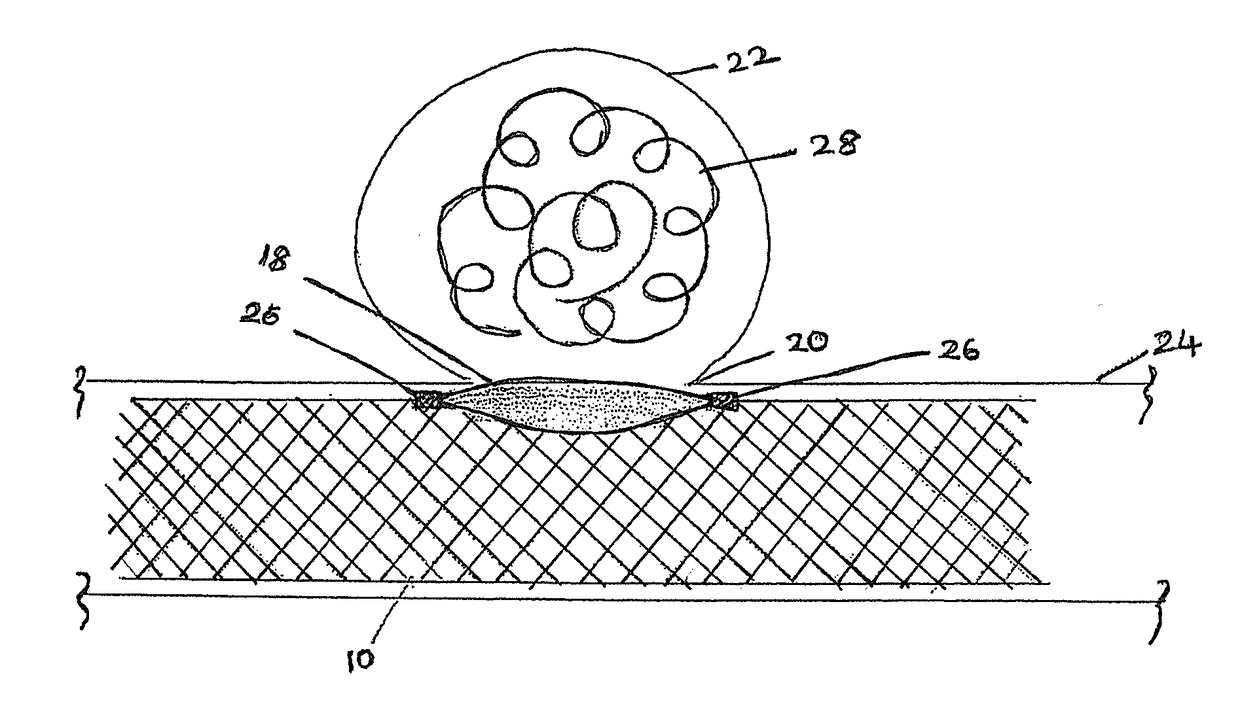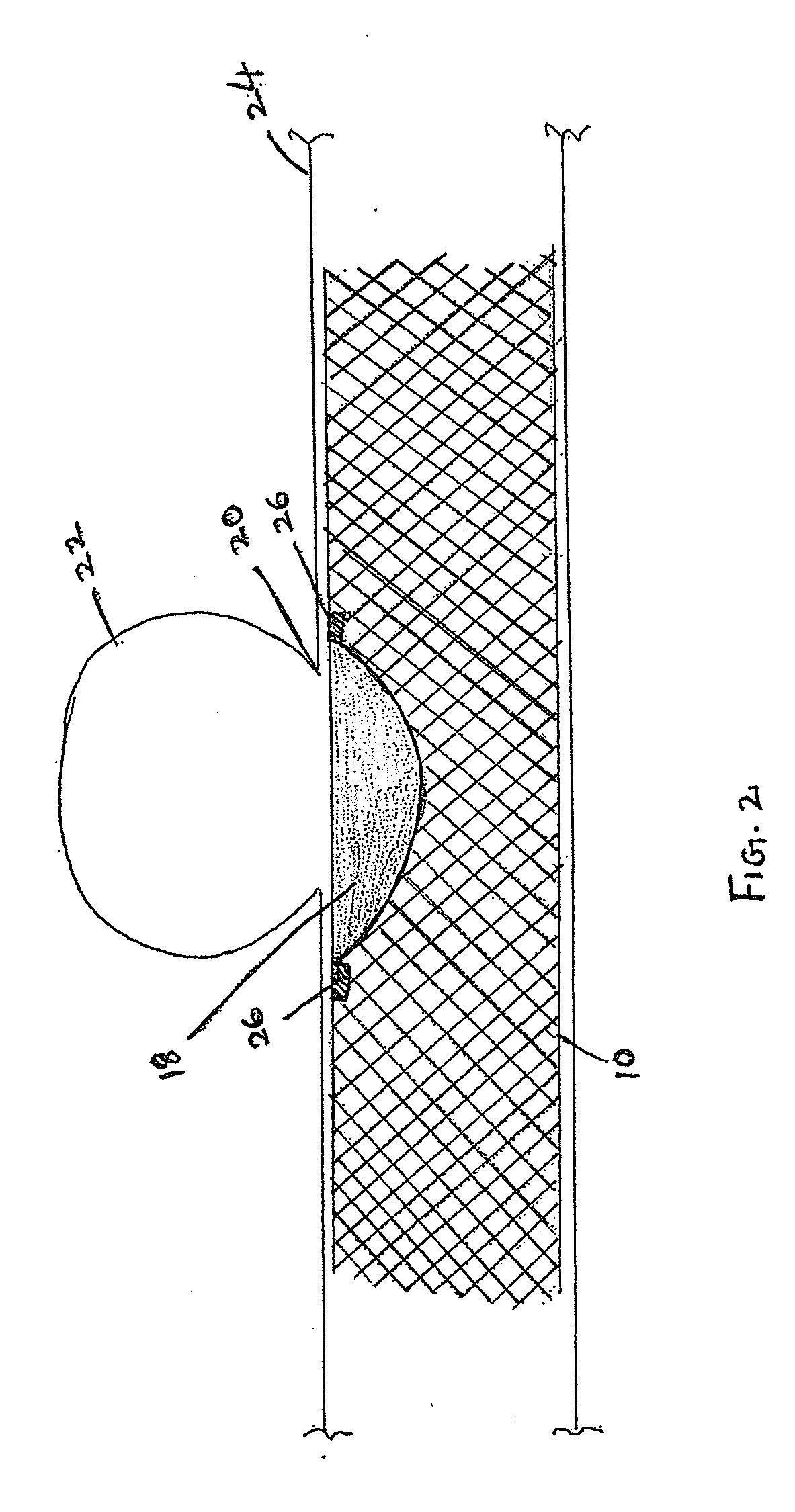Photo-Activatable Gel Coated Intracranial Stent and Embolic Coil
a technology of photoactivation gel and intracranial stent, which is applied in the field of stents and embolic devices, can solve the problems of complete or partial occlusion of the aneurysm cavity, and achieve the effect of effectively preventing the contact of x-ray photons and preventing premature activation of gel
- Summary
- Abstract
- Description
- Claims
- Application Information
AI Technical Summary
Benefits of technology
Problems solved by technology
Method used
Image
Examples
##ic example 1
Prophetic Example 1
Treating a Wide-Necked Cerebral Aneurysm
[0024]A patient presents to medical attention with a diagnosis of incidentally-discovered cerebral aneurysm of the internal carotid artery. The patient's angiogram demonstrates that the aneurysm has a wide neck, or orifice, to the parent vessel; therefore it is not amenable to simple coil embolization for fear that coils placed into the aneurysm will prolapse into the parent artery. The patient is also not an ideal candidate for craniotomy and clipping, for other reasons. One option for this patient would be a stent / coil technique, by which coils are deposited into a wide-necked aneurysm through an intracranial stent placed across the aneurysm neck. Although effective, this technique requires two procedures (deployment of intracranial stent, followed by deployment of coils), and this fact automatically doubles the surgical risk of the procedures. Also, being able to cross the stent with a microcatheter after it has been depl...
##ic example 2
Prophetic Example 2
Treating a Site of Arterial Injury
[0027]A dissection is a tear in the arterial wall that allows blood from the lumen of the vessel to enter its muscular wall, expanding and causing stenosis of the residual lumen, or penetrating all layers of the vessel wall, allowing bleeding to occur into the subarachnoid space. A patient in this case arrives at the emergency room with symptoms of headache or stroke. Options for vascular repair include therapeutic occlusion of the involved vessel, direct surgical reconstruction, and endovascular repairs such as stent deployment. For an intracranial dissection, the same problem with navigation exists: a porous flexible reconstructive device is required for navigation of tortuous and fragile cerebral vasculature, but the effectiveness of the device at the target site is compromised by that same flexibility and high porosity that render it inferior. In this case, an effective reconstruction is created by delivering the transformable...
PUM
 Login to View More
Login to View More Abstract
Description
Claims
Application Information
 Login to View More
Login to View More - R&D
- Intellectual Property
- Life Sciences
- Materials
- Tech Scout
- Unparalleled Data Quality
- Higher Quality Content
- 60% Fewer Hallucinations
Browse by: Latest US Patents, China's latest patents, Technical Efficacy Thesaurus, Application Domain, Technology Topic, Popular Technical Reports.
© 2025 PatSnap. All rights reserved.Legal|Privacy policy|Modern Slavery Act Transparency Statement|Sitemap|About US| Contact US: help@patsnap.com



